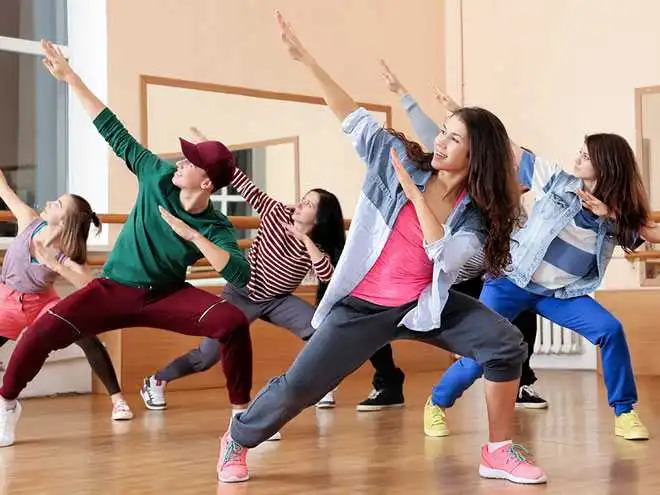
Dance is most broadly defined as the rhythmic movement of the body in time and space. Dance may be considered the oldest art form, as it predates language and embodies one of our most primal relationships to the universe. Movement is innate in children before they possess command over language and is evoked when thoughts or emotions are too powerful for words to contain. As humans, we move to achieve mobility, to communicate, to connect with others, and to express deeply held emotions. When movement becomes consciously structured and is performed with awareness for its own sake, it becomes dance. Dance is practiced for a variety of purposes, including as part of ceremonies, rituals, and rites of passage; to communicate, tell stories, and pass down information; to celebrate or mark special occasions; to connect with one another or foster community; and to express individual or collective emotions, moods, or feelings.
Dance can be a form of physical exercise, an important aspect of cultural heritage, a social activity, a therapeutic practice, and a form of artistic expression. There are a vast number of dance genres, styles, and traditions practiced by people throughout the world. Each dance practice is a reflection of the time and culture in which it was created, a unique expression of the people who practice it.
Dance and Diversity
focused on dance as an art form, we acknowledge the role that dance plays throughout the human experience. We recognize the wide range of dance practices that have existed throughout history, and the peoples and cultures from which they originated. We value the contributions of dancers, choreographers, and dance teachers from all backgrounds, working in all dance genres and styles. We honor the interconnectedness of the field of dance, knowing that we benefit from its rich diversity. Furthermore, we acknowledge that many of the dance genres and styles taught and practiced today are rooted in the history and current artistry of historically oppressed peoples, but that connection is often overlooked or outright erased in education, choreography, and performance. We recognize the vast contribution of dancers, educators, and choreographers from marginalized groups, yet we know that they are often overlooked, neglected, and outright rejected in academic and creative spaces.Together with NEO's Inclusion, Diversity, Equity, and Access (IDEA) Committee, we will continue to seek ways to fight for justice within the dance community. We know that there is still much to do within our organization and within dance education. We will continue to seek new ways to ensure that marginalized perspectives are recognized within our membership and throughout the dance education field.
About Dance as an Art Form
In dance as an art form, movement is used to communicate meaning about the human experience. The art of dance is a powerful medium to express one's values, thoughts, and aspirations. It can be an important tool for introspection and reflection about the world in which we live. As part of our mission to advance dance education centered in the arts, we support dance educators, artists, and students as they find and express meaning through movement in all dance genres and styles.
About Dance as Art in Education
In the United States, dance education is offered in a broad range of dance genres and styles, to students of all backgrounds, ages, skill levels, and abilities. Dance education is delivered in a number of settings, including:
- In public, private, and charter K-12 schools, built into the curriculum either as a required class or arts elective;
- In public, private, and charter schools, integrated into instruction in other subjects such as math, language arts, and social studies;
- In preschools and early childhood centers;
- In colleges and universities, often as part of a dance major or minor;
- In privately-owned dance studios, academies, and conservatories;
- In community centers, outreach programs, and after-school programs;
- As part of the educational arms of performing arts centers;
- In therapeutic situations such as in programs for senior citizens and populations with special needs.
Some of the most-taught dance styles in the U.S. include Hip Hop, Tap, Ballet, Jazz, Modern, Contemporary, Creative Movement, and American and Latin Ballroom Styles. Dance education is also increasingly available in movement practices originating in cultures across the globe, including dances of the African diaspora, Indian Classical dance styles, dance forms from Ireland and Scotland, and Chinese classical and folk dances.
Comments (0)